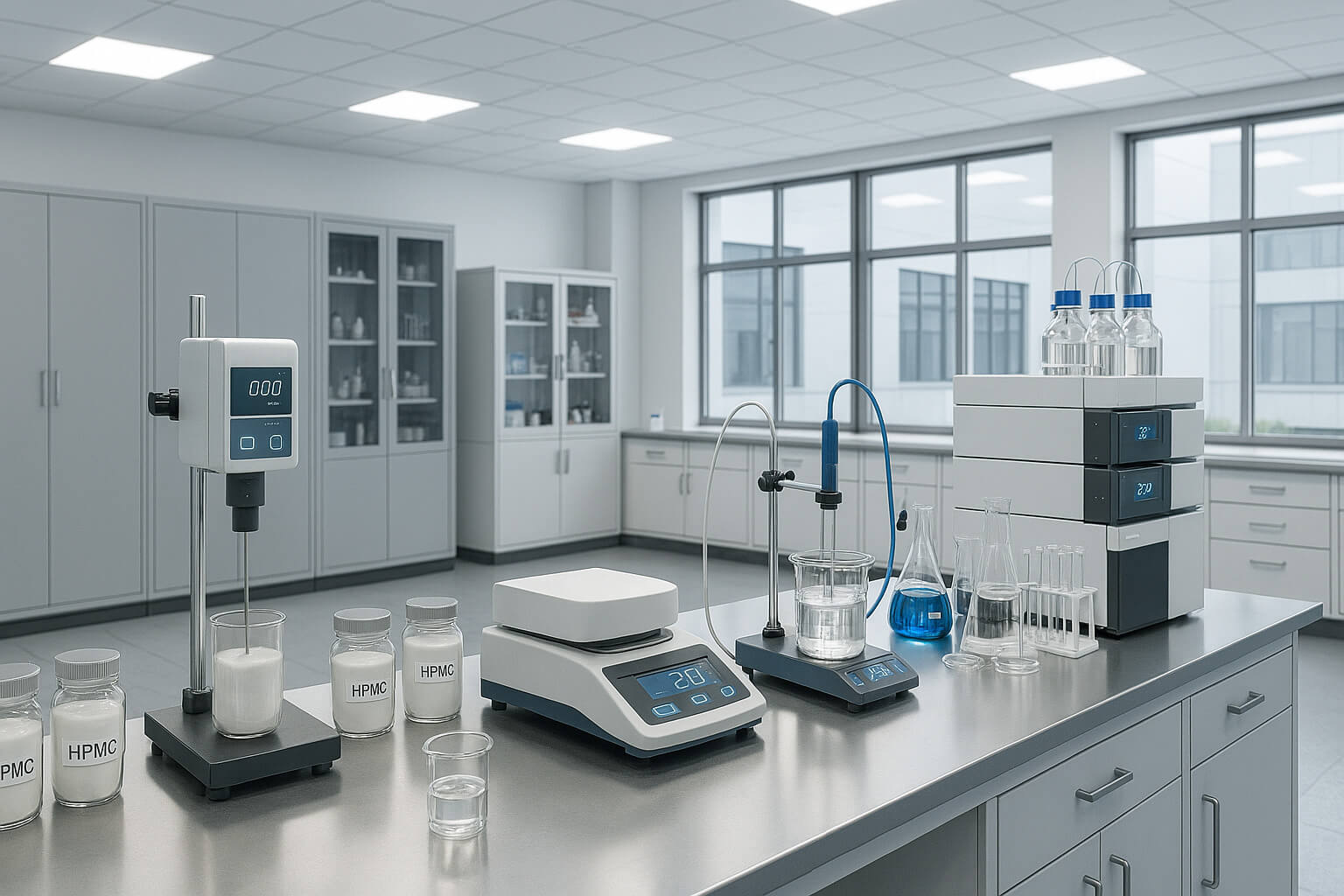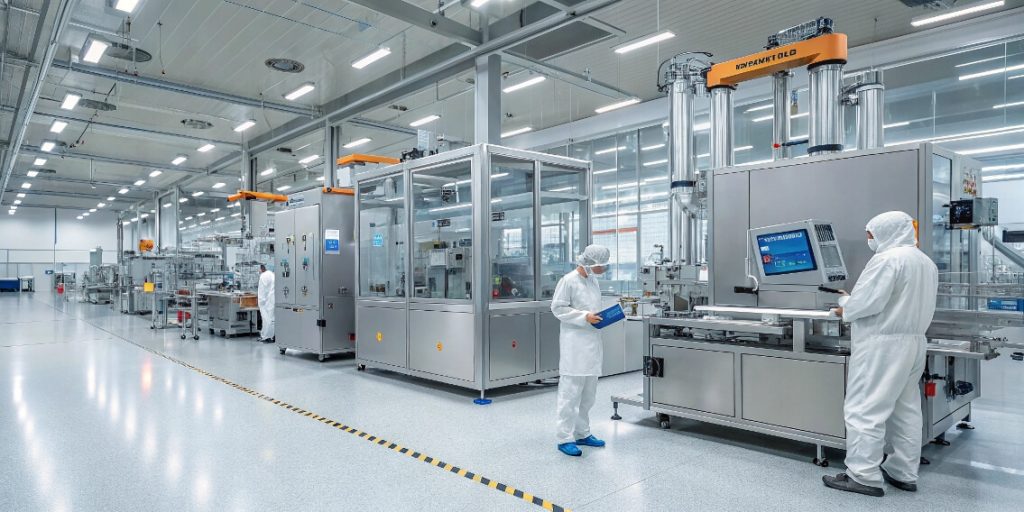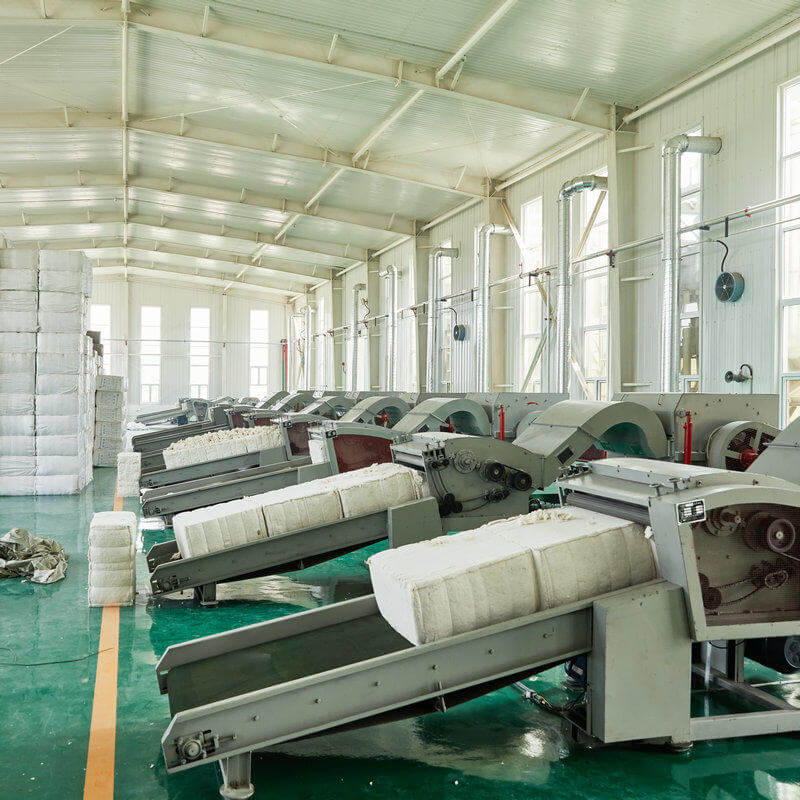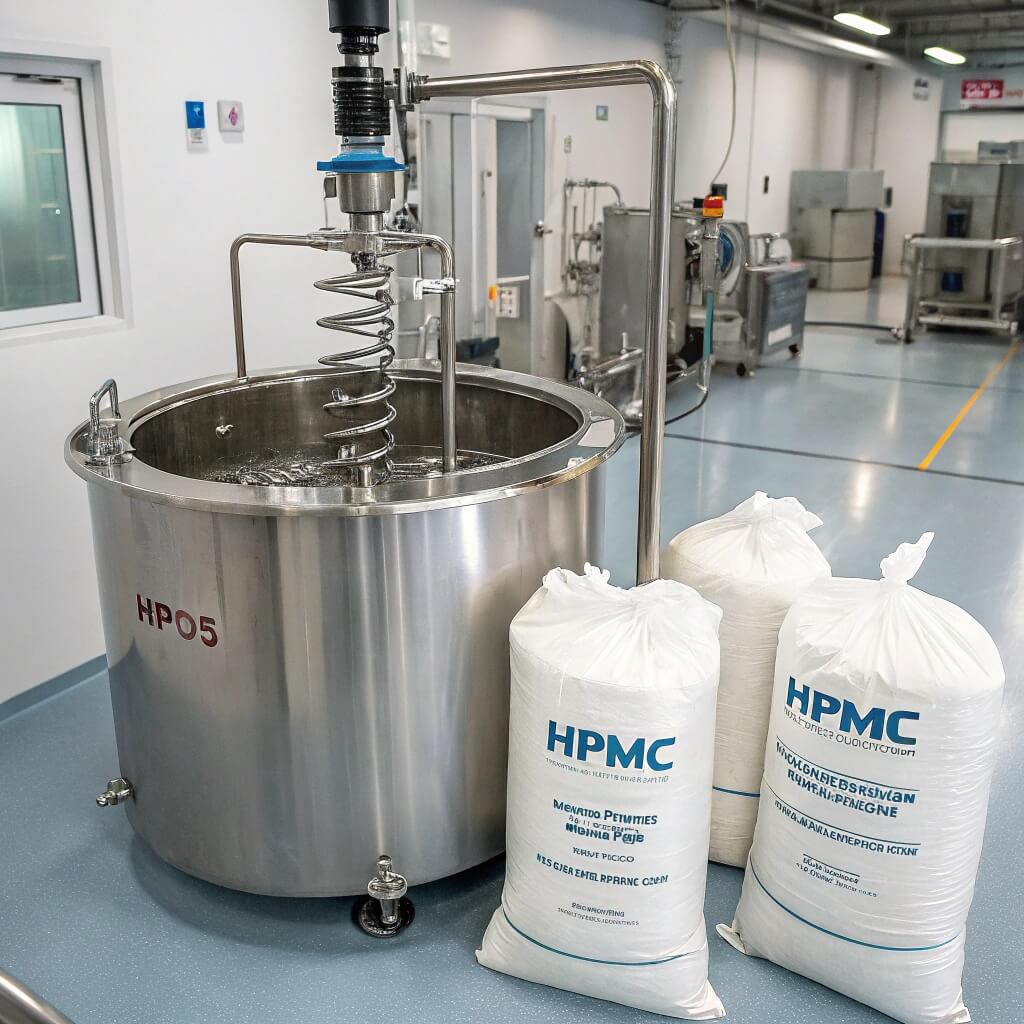Poor quality HPMC can ruin your products and damage your reputation. Why risk your business success?
HPMC manufacturers ensure product quality through comprehensive systems including strict raw material sourcing, precise production protocols, advanced testing methods, compliance with international standards, customization capabilities, and ongoing quality assurance programs.

A specialized quality control laboratory where technicians use advanced equipment to test HPMC samples for viscosity, substitution degree, purity, and other critical parameters.
Quality isn't just a buzzword at Morton—it's the foundation of everything we do. Let's take you behind the scenes to show how we maintain consistent HPMC quality that you can count on batch after batch.
What steps do HPMC manufacturers take to guarantee raw material quality?
Substandard raw materials can compromise your entire production line. Why start with anything less than the best?
The quality of HPMC begins with strict control of incoming raw materials. We implement a comprehensive supplier qualification program that evaluates potential vendors based on their quality systems, production capabilities, and compliance history.
For every raw material delivery, we conduct a series of tests before accepting materials into our production facility:
- Cellulose: purity level, fiber length, moisture content
- Caustic soda: concentration, metal content
- Methyl chloride: purity, moisture level
- Propylene oxide: purity, reactivity
Each supplier must provide detailed certificates of analysis with every shipment. Our lab team then verifies these certificates through independent testing using standardized ASTM methods to ensure accuracy and consistency.
We maintain detailed specifications for each raw material, with clearly defined acceptance criteria. For example, our cellulose pulp must have alpha-cellulose content above 96%, with ash content below 0.3% and controlled fiber length distribution. These tight specifications help ensure consistent reaction conditions during manufacturing.
Our raw material storage conditions are also carefully controlled. Temperature-sensitive materials like propylene oxide are stored in refrigerated areas with constant monitoring. Moisture-sensitive materials are kept in climate-controlled warehouses with humidity tracking. This careful storage prevents degradation before the materials enter production.
We've found that this front-end quality control eliminates many potential issues before they can affect the manufacturing process. By investing in thorough raw material verification, we significantly reduce batch-to-batch variations that might otherwise impact your finished products.
How is production consistency maintained in HPMC manufacturing?
Process variations can lead to inconsistent HPMC performance. Why let manufacturing fluctuations affect your product quality?
Maintaining consistency throughout the HPMC production process requires precise control of multiple variables. We've implemented a comprehensive process control system that monitors and adjusts critical parameters in real time.
Our production consistency strategy includes:
- Standardized batch formulations with exact measurements
- Automated process control systems for critical parameters
- Regular equipment calibration and maintenance
- Detailed batch production records for traceability
- In-process testing at key production stages
The reaction phase is particularly critical for consistency. We monitor temperature profiles throughout the reactor vessel using multiple sensors that feed into our control system. If temperatures deviate from the specified range, automatic adjustments maintain optimal conditions. This tight control ensures uniform substitution patterns in the HPMC polymer chain.
Mixing parameters also significantly impact product consistency. Our reactors use precisely controlled agitation speeds and mixing patterns optimized for each product grade. The agitation profile changes during different reaction phases based on extensive testing to determine ideal mixing conditions.
Water quality directly affects reaction consistency, so we maintain our own water purification system that produces ultrapure water meeting USP standards. Regular testing ensures this water remains within tight conductivity and microbial specifications throughout production.
For batch-to-batch consistency, we operate with detailed standard operating procedures that specify every step of the production process. Each operator receives extensive training and must demonstrate competency before working independently. This human element, combined with automation, creates a robust system that delivers predictable results with minimal variation.
What testing methods are used for HPMC quality control?
Inadequate testing can miss critical quality issues. How can you trust a product without thorough verification?
Quality testing forms the backbone of our HPMC quality control program. We employ both standard industry methods and proprietary techniques to ensure our products meet all specifications and performance requirements.
Key testing parameters and methods include:
| Test Parameter | Verfahren | Specification Range |
|---|---|---|
| Viskosität | Rotational viscometer | Grade-specific (±5%) |
| Substitution degree | Gas chromatography | Methoxyl: 19-30%, Hydroxypropyl: 4-12% |
| Gel temperature | Thermal analysis | 58-90°C depending on grade |
| Particle size | Laser diffraction | 90% passing 100 mesh |
| Moisture content | Loss on drying | ≤5% |
For viscosity testing, we use precision rotational viscometers with temperature control at 20°C ±0.1°C. This precise temperature control is essential since HPMC viscosity changes approximately 2% per degree Celsius. Each instrument is calibrated daily using certified reference standards to ensure measurement accuracy.
Substitution degree testing uses gas chromatography following ASTM E1252 methods. This analysis determines the methoxyl and hydroxypropyl content, which directly affects HPMC functionality in applications. Our lab maintains control charts for these measurements to track method performance over time.
For pharmaceutical and food-grade HPMC, we conduct additional tests including heavy metals analysis using ICP-MS (Inductively Coupled Plasma Mass Spectrometry), residual solvent testing via gas chromatography, and microbial testing following USP <61> and <62> methods. These tests ensure our products meet the stringent purity requirements for these sensitive applications.
We also perform application-specific testing that simulates real-world usage. For construction grades, this includes water retention testing, adhesion strength for tile adhesives, and sag resistance for renders. For pharmaceutical grades, we conduct dissolution profile testing that mimics drug release patterns in various pH environments.
Every batch undergoes complete testing before release, with results documented in a detailed Certificate of Analysis. This testing regime ensures that only HPMC meeting all specifications reaches our customers.
How do manufacturers ensure compliance with international standards?
Regulatory non-compliance can block your market access. Why risk costly delays and rejected shipments?
Compliance with international standards represents a core commitment at our manufacturing facility. We've built our quality system to meet the most stringent global requirements across multiple industries.
For pharmaceutical applications, our HPMC complies with multiple pharmacopeia standards including:
- United States Pharmacopeia (USP)
- European Pharmacopoeia (EP)
- Japanese Pharmacopoeia (JP)
- Chinese Pharmacopoeia (ChP)
Our food-grade HPMC meets FDA 21 CFR 172.874 requirements and is produced in facilities that follow Good Manufacturing Practices (GMPs). We've also obtained kosher and halal certifications for these grades to meet diverse customer requirements.
For construction applications, we ensure compliance with relevant ASTM and ISO standards governing performance in mortars, renders, and other building materials. This includes testing for water retention, workability, adhesion strength, and other application-specific properties.
Our compliance strategy includes regular third-party audits by certification bodies and customers. These audits verify that our quality systems meet current standards and identify opportunities for improvement. We welcome these assessments as they help strengthen our processes and build customer confidence.
Documentation plays a crucial role in compliance. We maintain detailed records of all production activities, testing results, and corrective actions. This documentation creates a complete audit trail that demonstrates compliance with regulatory requirements and allows traceability throughout the product lifecycle.
We stay current with regulatory changes through active participation in industry associations and regular review of updated standards. When regulations change, we promptly assess the impact on our products and processes, implementing any necessary modifications to maintain compliance.
This commitment to compliance provides our customers with confidence that our HPMC products will meet their regulatory requirements, regardless of their application or market.
How is HPMC customized for application-specific performance?
Standard HPMC grades often fall short in specialized applications. Why compromise with a one-size-fits-all solution?
HPMC customization represents one of our core strengths as manufacturers. By carefully adjusting production parameters, we create specialized grades that deliver optimal performance for specific applications.
The primary customizable properties include:
- Viscosity (from 5 to 200,000 mPa·s)
- Methoxyl content (affects water solubility)
- Hydroxypropyl content (influences thermal gelation)
- Particle size distribution (impacts dissolution rate)
- Surface treatment (improves dispersibility)
For pharmaceutical applications, we can tailor substitution patterns to create HPMC with specific controlled-release profiles. Higher hydroxypropyl content creates a more hydrophilic polymer that hydrates quickly and forms a gel layer for sustained drug release. Our technical team works closely with pharmaceutical companies to develop custom HPMC grades for novel drug delivery systems with precise release kinetics.
In construction applications, we customize HPMC to provide specific water retention, open time, and sag resistance properties. For example, our tile adhesive grades feature optimized viscosity profiles that maintain workability while preventing tiles from sliding on vertical surfaces. This customization involves adjusting both chemical composition and physical properties like particle size.
For food applications, we develop HPMC with specific gel temperatures and texturizing capabilities. This includes grades that form firm, heat-stable gels for plant-based meat alternatives, as well as cold-water soluble grades for instant beverage applications.
The customization process begins with a detailed discussion of your application requirements. Our technical team then recommends initial formulations based on our experience with similar applications. After producing small test batches, we send samples for your evaluation and refine the formulation based on your feedback.
This collaborative development process ensures that the final HPMC grade meets your specific performance requirements, often allowing you to improve your products or solve formulation challenges that standard grades cannot address.
What systems are in place for long-term quality assurance?
Even established manufacturers can experience quality drift over time. How can you trust your supplier's consistency year after year?
Long-term quality assurance requires robust systems that maintain standards while continuously improving processes. At our factory, we've implemented a comprehensive quality infrastructure that ensures consistent HPMC production year after year.
Our long-term quality assurance strategy includes:
- Document control system for procedures and specifications
- Employee training and competency verification
- Equipment qualification and preventive maintenance
- Supplier management program
- Change control process
- Corrective and preventive action (CAPA) system
- Regular management review of quality metrics
Our document control system ensures that all production and testing activities follow current approved procedures. Any changes to these procedures go through a formal review and approval process that evaluates potential impacts on product quality. This controlled approach prevents unauthorized modifications that might affect HPMC performance.
Equipment qualification follows a rigorous protocol including design qualification, installation qualification, operational qualification, and performance qualification. After implementation, each piece of equipment undergoes regular preventive maintenance according to a defined schedule. Critical equipment like reactors, filtration systems, and analytical instruments have backup systems to prevent production interruptions.
Our change control process evaluates any proposed modifications to facilities, equipment, raw materials, or procedures. This systematic assessment identifies potential risks and determines appropriate testing to verify that changes don't adversely affect product quality. Change management protocols also ensure proper documentation and communication of all modifications.
The CAPA system addresses both actual quality issues and potential risks identified through trend analysis. When deviations occur, we conduct thorough root cause investigations and implement corrective actions to prevent recurrence. This systematic approach to problem-solving has steadily reduced quality incidents over time.
Management regularly reviews key quality metrics including customer complaints, batch rejection rates, audit findings, and supplier performance. This oversight ensures quality remains a top priority throughout the organization and drives continuous improvement initiatives.
FAQs
Wie läuft der Herstellungsprozess von HPMC ab?
HPMC manufacturing involves a multi-step chemical process where cellulose from wood pulp or cotton is treated with sodium hydroxide to form alkali cellulose. This intermediate then reacts with methyl chloride and propylene oxide to introduce methyl and hydroxypropyl groups onto the cellulose backbone. The modified cellulose undergoes washing, neutralization, purification, drying, and milling to create the final HPMC powder.
Ist HPMC von der FDA zugelassen?
Yes, HPMC is FDA approved for various applications. In pharmaceuticals, it's recognized as a safe excipient under USP standards. For food applications, HPMC is approved under FDA regulation 21 CFR 172.874 as a food additive when manufactured according to good manufacturing practices. Different grades have specific approvals based on their intended use and purity specifications.
What are the uses of HPMC grades in pharmaceutical industry?
In pharmaceuticals, HPMC serves multiple functions depending on its grade. Low-viscosity grades create film coatings that mask taste and protect tablets from moisture. Medium-viscosity grades work as binders in tablet formulation. High-viscosity grades function as matrix formers in controlled-release medications, creating gel barriers that regulate drug release rates. HPMC also serves as a stabilizer in liquid formulations and ophthalmic solutions.
Wie testet man auf HPMC?
HPMC testing involves multiple methods targeting specific properties. Viscosity is measured using rotational viscometers at controlled temperatures. Chemical composition analysis uses gas chromatography to determine substitution degrees. Physical properties like particle size use laser diffraction analysis. Gel temperature is measured through thermal analysis. Purity testing includes heavy metals analysis, residual solvents testing, and microbial limits tests for pharmaceutical grades.
Abschluss
Quality assurance in HPMC manufacturing requires a comprehensive approach that spans from raw material selection through final product testing. At Morton, we've developed robust systems to ensure consistent product quality that meets or exceeds international standards across diverse applications.
Our commitment to quality isn't just about meeting specifications—it's about delivering HPMC products that perform reliably in your applications, reducing your formulation challenges and production variables. Through careful control of every manufacturing step, thorough testing, and continuous improvement, we provide the consistency your products demand.
Contact our technical team today to discuss your specific HPMC requirements or to request samples for testing in your applications. Our specialists can recommend the optimal grade for your needs or develop a custom solution that addresses your unique challenges.




